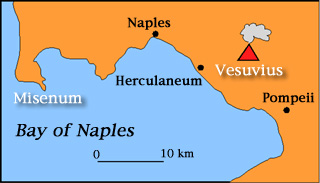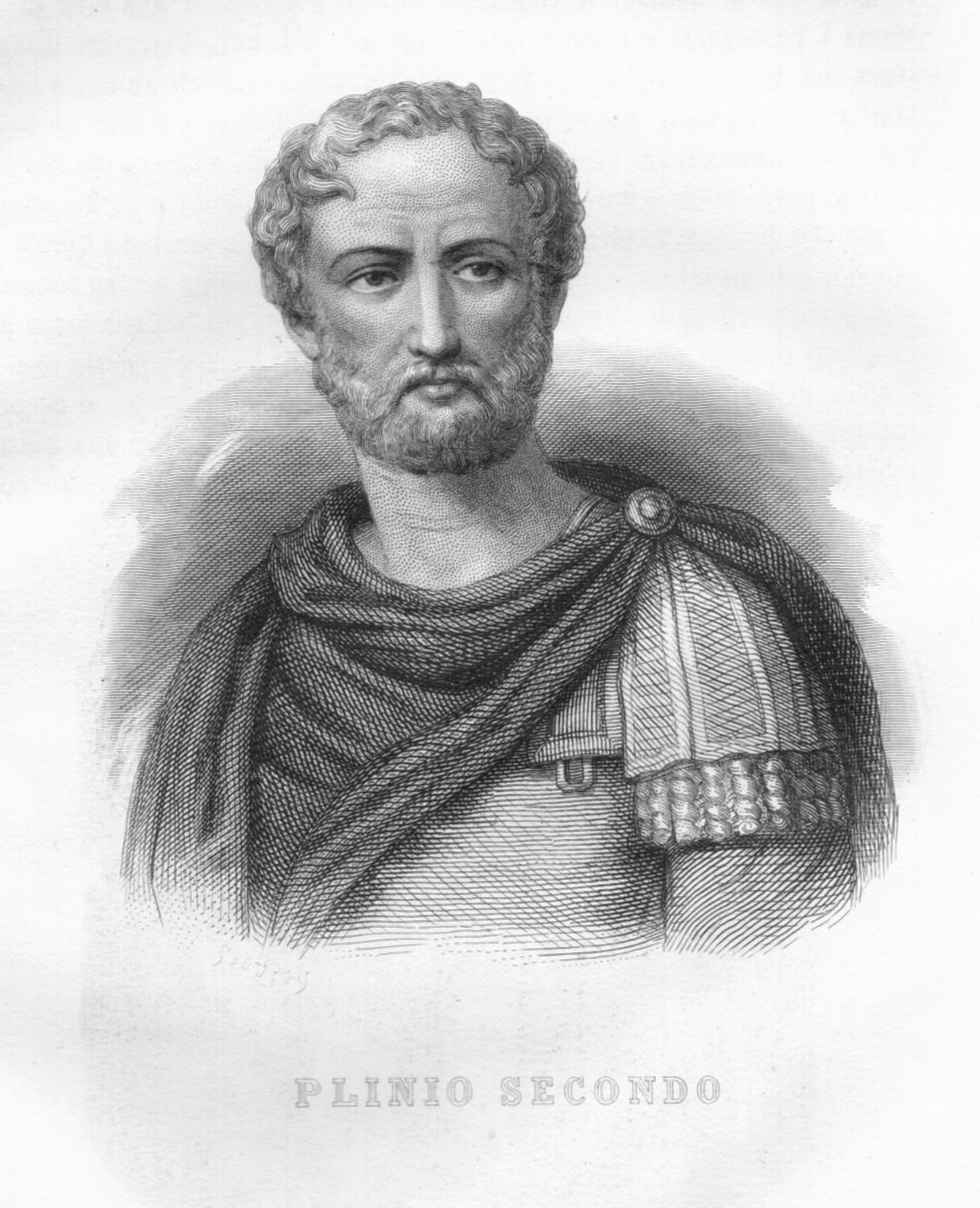

Volcanologists rely on first-hand observations of volcanic eruptions to gain insights into how volcanoes work. Often these observations are made by individuals who are not trained scientists but who just happen to be in the right place at the right time. A good example of this is a series of letters that Pliny the Younger wrote describing the 79 AD eruption of Vesuvus and the death of his uncle, Pliny the Elder. Pliny the Younger was a young student who happened to be within sight of the volcano when it erupted. His letters are, in fact, the first written accounts of an explosive volcanic eruption.

Pliny the Younger was a 17 year old student at the time of the 79 AD eruption. He provided the first written documentation of an explosive eruption in a series of letters describing the circumstances surrounding the death of his uncle, Pliny the Elder. Pliny the Younger went on to serve in the Roman government in a variety of capacities, including senator and governor of the province of Bithynia-Pontus.
During the eruption, Pliny the Younger was located at the port of Misenum where he had a good view of Vesuvius across the Bay of Naples to the west. The banner image above is a painting by Angela Kaufmann (Pliny the Younger and his Mother at Misenum, 79 AD; oil on canvas, 1785) depicting a scene of the eruption from the younger Pliny's viewpoint at Misenum. Pliny the Younger is in the blue robe and Pliny the Elder, agruing for why he must depart, is in the yellow robe.

Pliny the Elder (Caius Plinius Secundus; 23-79 A.D.) was a Roman senator and a natural historian who had a great passion for observing and writing about natural phenomena. He wrote an important work on natural history based on his observations of the world around him. His Natural History was the first encyclopedia ever published. It was his dedication to close observation of natural phenomena that was directly responsible for his death during the 79 AD eruption. Pliny the Elder was a commander of the imperial fleet at the naval base of Misenum, and was responsible for the safety of the entire western half of the Mediterranean Sea.
From Misenum, he had an excellent view of Vesuvius volcano across the Bay of Naples. Pliny the Elder travelled from Misenum to the shores of Vesuvius but was forced to head south towards Stabiae because floating rafts of pumice made landing impossible. The video here shows the route of his voyage during the eruption.
Below are two excerpts from Pliny the Younger's letters. Watch the videos, and note the amount of detail and the kinds of features that he described. In subsequent exercises you will be making observations of explosive eruptions in much the same way as the younger Pliny did in 79 A.D.
Here, he writes of the cloud of gas and ash that rose up from the volcano.
Here, he writes of the effects of the eruption that reached where he was located.
Now that you've seen Pliny the Younger's remarkable descriptions of the 79 AD eruption, it's time to view some eruptions for yourself and describe these events in your own words.